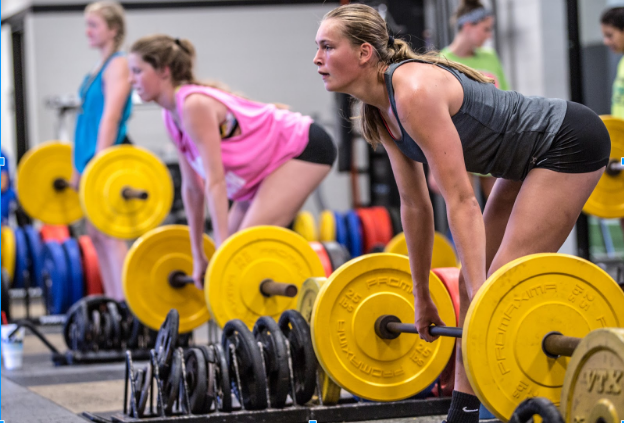Feb 19, 2024Cross-training for sport-specific athletes
Cross-training is a series of exercises that utilizes a variety of training outside of their main sport to develop improvements in fitness. Coaches have been utilizing this type of training in performance development for a long time. There are many benefits and things to consider if it’s something you want to utilize in your program.
I will outline the benefits as well as things to keep in mind when incorporating cross-training. Similar to playing different sports, cross-training provides mechanisms that produce the same outcomes as playing multiple sports.
 However, playing those multiple sports might not be an option for some athletes but training this way can give similar opportunities without the pressure or inability to play other sports.
However, playing those multiple sports might not be an option for some athletes but training this way can give similar opportunities without the pressure or inability to play other sports.
Athletes work hard at improving their sport. Keeping them fresh and tapping into their potential is the goal of training athletes. Repetitive movements happen during the season so make sure to create variety so they don’t become burnt out or possibly cause an injury. Cross-training can be beneficial for these reasons. Not only does it provide variety but it can also give life to new skills and work capacity that they may need to improve. Saving athletes from the daily impact that their sport puts them through is a big reason why I like to incorporate it.
Not only does training with these methods help develop their abilities in their sport but it can also bring out a competitiveness that can mimic similar behaviors on the competition field. Providing that competitive structure in a controlled environment can also help in teaching moments how to push through difficult moments. It doesn’t completely mimic competition on the field, but it can be a fun alternative. There are times when it can also grow into something bigger than what was planned if the athletes get into whatever the workout might be. It can also produce good leadership & team-building skills through the encouragement they give each other.
Incorporating this type of training can help produce a more well-rounded athlete, improve recovery, and prevent injuries. Make sure to know where improvements need to be made before starting. It should be activities that the athletes enjoy. Some of the challenges of training this way might include each athlete’s various abilities and fitness levels. Choosing the right exercises that the whole group is ready for or showing modified versions if necessary are important factors to consider. The work-to-rest ratios are typically 1:1 or 2:1 intervals. Starting with a shorter amount of time and working your way up in either in time or number of rounds is a good way to progress in a way that’s safe and effective. Depending on your situation when considering this type of training, make sure to communicate with the sport coach to see if they are already doing any of this type of training in their off-season conditioning or practices.
Here are a few tips to get started:
- Perform a general warm-up.
- Start slow, pick basic and less intense movements.
- Pick a work-to-rest ratio that would be relevant to the current athlete’s level of fitness.
- If using weights, make sure to choose the proper weight for the number of reps and or time that will be required to maintain proper technique.
- Perform a proper cool-down.
- Get adequate rest between training sessions.
Some of those benefits of Cross-training include:
- Break in routine
- Different kinds of stimuli
- Work capacity development or improve overall fitness
- Decrease burnout
- Prevent injuries
- Prevent muscle imbalances
Types of Cross-training include:
- Hiking (with and without weight vests/rucksacks or some added weight)
- Yoga
- Pilates
- Swimming
- Rowing
- Weightlifting Circuits
- Bodyweight Circuits
- Combination of Bodyweight & Weightlifting Circuits
- Plate Circuits
- D.B. Circuits
- K.B. Circuits
Some specific examples of Cross-training workouts we use in our program:
The Plate Circuit is performed by the whole team together without letting them put the plate down until the round is completed. Each athlete performs 10 reps of each exercise until the round is completed. The team does anywhere between 3-5 rounds. If anyone even accidentally drops the plate the whole team starts over.
